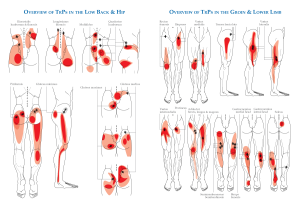Treating Nociceptive Back Pain – Dr. Stefano Sinicropi, M.D.

Category: | Author:
Pain is usually classified into one of two different categories, neuropathic or nociceptive. Neuropathic pain originates in the body’s nervous system, while nociceptive pain is the result of actual physical damage to the body. For example, a muscle strain or a burn are examples of nociceptive pain. In today’s blog, we take a closer look at how nociceptive back pain is diagnosed and treated.
Causes And Symptoms Of Nociceptive Back Pain
Nociceptive back pain is typically the result of a form of trauma on the body. If you are exposed to traumatic force, you put your back under excessive stress or any action causes a soft tissue or bone in the spine to develop an injury, you may be dealing with nociceptive pain. It’s also worth noting that given the nature of the spine and the close proximity to numerous nerves, it’s possible that some back injuries can present with nociceptive and neuropathic symptoms. Nociceptive pain can also present in the wake of a related spinal condition, like spondylosis, spondylolisthesis, stress fractures or osteoarthritis.
Although it can present in a variety ways, nociceptive pain is usually deep, aching or throbbing in nature. If you’re dealing with any of these symptoms, especially if you have just experienced significant or repetitive trauma to the area, you’ll want to consult with a back specialist or your primary care physician. They will work to pinpoint the source of your discomfort and work to develop an individualized treatment plan.
Diagnosing And Treating Nociceptive Back Pain
Your back specialist will begin to get a better understanding of your back pain by reviewing your medical history, asking about your symptoms and conducting a short physical exam. Depending on your situation, they may want to take a closer look inside your spine with the help of an X-ray, MRI, CT scan or ultrasound, although additional imaging exams may not be necessary.
Treatment will be based on your underlying cause of discomfort, but oftentimes it can be effectively managed with non-operative treatments. Some of the most common treatments for nociceptive back pain include a combination of:
- Rest
- Anti-inflammatories
- Activity avoidance
- Posture improvements
- Physical therapy
- Gentle stretching
- Ice/Heat therapy
- Muscle relaxants
In many instances, symptoms start to improve after just a few days or treatment, but full recovery can take weeks or months depending on your underlying condition. Protecting the area from additional injury and then slowly working to increase strength and flexibility is the most common approach, and typically leads to a full recovery.
If you’ve suffered an acute injury and are battling deep throbbing pain that isn’t associated with nerve damage, let Dr. Sinicropi and his team help you put the issue in the past. For more information on how nociceptive back issues are effectively treated, or for help with a different spinal issue, give Dr. Sinicropi and the team at The Midwest Spine & Brain Institute a call today at (651) 430-3800.
Related




